By Lee Copland, Managing Director, Maxxess EMEA | August 16, 2023
In the last year and a half, employers have turned their attention to enhancing the efficiency of their operations, focusing on the synergy between their workforce and systems. The emphasis has been on optimizing various aspects: from access to physical and digital resources, seamless movement within branches and locations, managing external visitors and contractors, to remote work dynamics using core business systems like CRM and Microsoft Active Directory.
At the core of these endeavors lies a central question that resonates across IT, HR, security, facilities, and the C-suite: How can we elevate and integrate our systems to enhance workflows? This concept is not abstract; it’s driving remarkable innovations and tech upgrades across diverse corporate landscapes, spanning healthcare, airlines, oil & gas conglomerates, universities, logistics, and international hotel chains.
The Pandemic Propelled Progress
The impetus to streamline workflows received a significant boost from the pandemic, which prompted an abrupt shift to remote and hybrid work scenarios. While innovation was already in motion, the pandemic accelerated its pace, removing the shackles of corporate inertia. This transformation has been further fueled by the “great resignation” and labor shortages, compelling organizations to prioritize productivity, efficiency, and attracting and retaining talent.
The Growing Economic Imperative
This push for efficiency takes on even greater significance as economic pressures mount. The global economy is facing the twin threats of high inflation and slowing growth, potentially leading to stagflation. The Brookings-FT tracking index signals reduced output and waning confidence worldwide. The IMF has revised down its global growth forecasts, and concerns loom over an overheating US economy potentially sparking a global recession. As economies grapple with challenges, sectors across the board face the impact of wage inflation, higher taxation, escalating fuel and energy costs, and supply chain disruptions. Amidst these pressures, organizations are compelled to manage budgets more effectively and make strategic purchasing decisions.
The Power of Integrated Efficiencies
Efficiency gains are being realized through accelerated automation of daily tasks such as frictionless access control, ID authorization, room allocation, mobile staff management, streamlined deliveries, and automated building functions. However, the real potential lies in technology integration that transcends these tasks, fostering comprehensive workflow enhancements. Enabling employees to access services seamlessly via a secure platform on their devices simplifies their tasks and collaboration efforts.
This integration empowers project managers to monitor progress, department heads to coordinate resources, and reduces hidden back-office costs, from access rights management to equipment replenishment. The cumulative impact, especially across large workforces and sprawling estates, yields significant savings.
Unlocking Sector-Wide Efficiency
Even within the public sector, there’s a growing push towards collaboration and connection. Local authorities, health providers, social services, and private sector suppliers are urged to share information, services, and facilities. This integration is especially prominent in digitized access control, benefiting sectors like healthcare. Social workers, care providers, and council officers are now granted digital passes, eliminating the need for time-consuming procedures and multiple ID passes for different facilities.
Anticipating a Wave of Innovation
The corporate world is rapidly digitizing manual processes to alleviate pressure on their workforce, especially given the scarcity of talent. This transition, however, is only the beginning. The realm of workflow automation and streamlining is poised for transformative innovation, as organizations strive to adapt to economic pressures while exploring novel pathways to efficiency.
In the upcoming two to three years, the convergence of technology and efficient workflows promises groundbreaking progress across sectors. Economic challenges serve as a catalyst for ingenuity, and organizations are poised to leverage technology to emerge stronger and more resilient.

